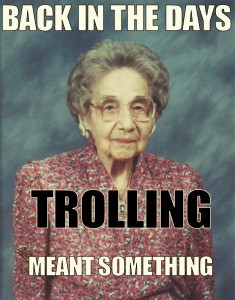While the official theme of the Association of Internet Researchers 14th annual conference was “resistance + appropriation,” it was striking that a number of panels, papers, and plenary talks touched on a kind of “resistant” digital practice that is less utopian. Hate and hating in its various incarnations — contrary to likes and hearts, or dissent for social justice — was the topic of discussion in many rooms at the downtown Denver Westin. In nearly any time slot, one could attend talks discussing online incivility addressed from a range of perspectives, and discussed in terms of the Internet as a racist machine (Lisa Nakamura’s plenary talk), the “anti-social web” (a panel chaired by Daniel Greene), the problematic hegemonic tendencies of the Internet (a paper on reddit by Adrienne Massanari), anti-fandoms (which emerged in a panel on fan culture by Mel Stanfill), and of course, haters (in a fishbowl with Kate Miltner, Alice Marwick, and Whitney Phillips entitled ‘Haters Gonna Hate’?). In each of these discussions, hate and its vicissitudes were complicated by entangled and ambivalent relationships with a range of topics, from technology to play to freedom of speech to participatory culture.
This focus was reminiscent of Culture Digitally’s workshop in London this past June, where a group of participants brainstormed on the epistemological and ontological differences between offline languages and understandings and how they port in online spaces and communities. Our working group, which consisted of Tim Jordan, Hector Postigo, Kate Miltner, and ourselves, and which later expanded to include Kevin Driscoll, Sam Srauy, and Lana Swartz, focused in particular on the naming of practices that seem to supplant discussions of hate online, from griefing and trolling to flaming and cyberbullying, and how they are often justified or dismissed as “just playing.” While we agreed that inclusion and exclusion are moving targets in online and offline spheres, we disagreed on the nuances of the applicability of legalistic notions in these spaces, particularly stalking, hate speech, and sexual harassment in the workplace. It seemed that the best way to approach changing norms and practices related to civility and antagonism online was through a historical analysis of the regulatory structures shaping participation in not only contemporary communities but as within their antecedents, from Usenet to MUDs and MOOs.
After the moment that hate and hating seemed to have at this year’s AoIR conference, it seems all the more urgent to provide a historical grounding for the claims being made about the status of hate in digital spaces. As we develop this project through a series of grounded case studies, we welcome feedback from the wider community of Culture Digitally scholars and readers. We’d like to provoke a discussion here especially around questions such as: how do community norms around hate and hate speech arise in specific sites? How is hate regulated by community policing and policy documents such as FAQs? How do the architectures of certain online spaces shape the way that hate gets expressed or managed? How might lurking, in addition to posting, in hate-filled spaces invoke a kind of ethical consumption? Methodologically, how might we reconcile our own political convictions while studying hate cultures? And, more pragmatically, how do we deal with all the data when approaching the long history of hating on something as massive as Usenet?
In generating discussion here, we hope both to furnish a more defined research agenda as well as to reflect on this “moment for hate” as a significant pivot point in the study of digital cultural production.
